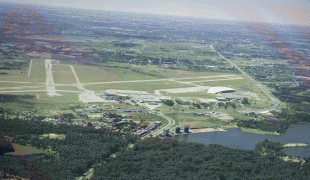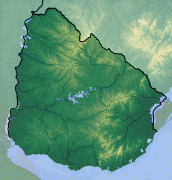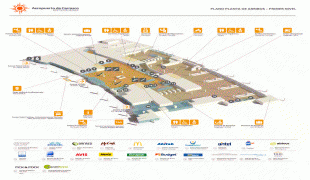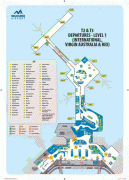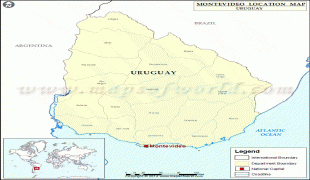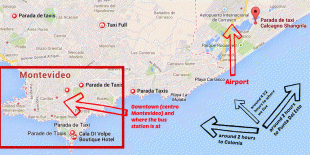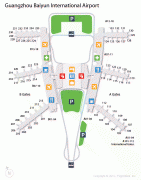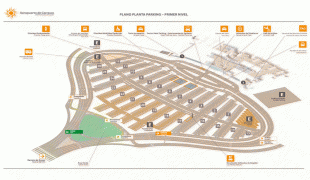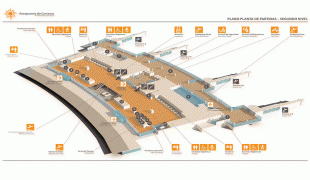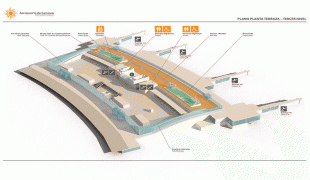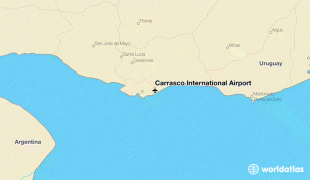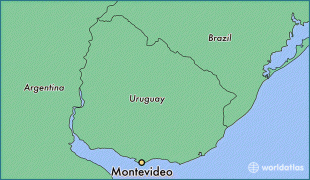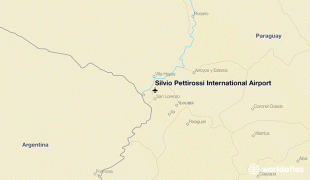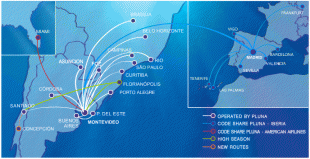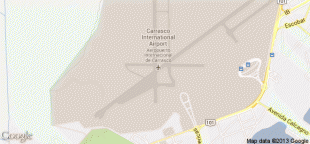Carrasco International Airport (Carrasco International Airport)
Carrasco/General Cesáreo L. Berisso International Airport is the main international airport of Uruguay. It is the country's largest airport and is located in the Carrasco neighborhood of Montevideo. It has been cited as one of the most efficient and traveler-friendly airports in Latin America.
The airport is named after Cesáreo L. Berisso, a pioneer of Uruguayan aviation, and it also hosts an air base of the Uruguayan Air Force.
The original passenger terminal was inaugurated in 1947. In 2003 the Uruguayan government transferred the administration, operation and maintenance of the airport to the private investment group Puerta del Sur S.A, which since then invested in several upgrades of the airport.
On 3 February 2007, construction began on a new terminal parallel to Runway 06/24. Runway 01/19 was lengthened to 2250 m and the former Runway 10/28 was permanently closed because the new terminal cuts across it. The new terminal, designed by Uruguayan architect Rafael Viñoly, has the capacity to handle 3 million passengers a year, including a much larger parking area built for over 1200 vehicles. This new terminal building has four jetways, separate floors for arrivals and departures and a large viewing area on the top floor. The terminal has room for expansion for two additional jetways and a maximum capacity of 6 million passengers per year before the building would need actual enlargement. The new terminal was inaugurated on 5 October 2009 with official operations beginning on 29 December 2009. A new US$15 million cargo terminal was also constructed.
Regular passenger flights were suspended in mid-March 2020 due to the COVID-19 pandemic. Regular flights to Spain were resumed in July, and to São Paulo and Santiago in August.
The airport is named after Cesáreo L. Berisso, a pioneer of Uruguayan aviation, and it also hosts an air base of the Uruguayan Air Force.
The original passenger terminal was inaugurated in 1947. In 2003 the Uruguayan government transferred the administration, operation and maintenance of the airport to the private investment group Puerta del Sur S.A, which since then invested in several upgrades of the airport.
On 3 February 2007, construction began on a new terminal parallel to Runway 06/24. Runway 01/19 was lengthened to 2250 m and the former Runway 10/28 was permanently closed because the new terminal cuts across it. The new terminal, designed by Uruguayan architect Rafael Viñoly, has the capacity to handle 3 million passengers a year, including a much larger parking area built for over 1200 vehicles. This new terminal building has four jetways, separate floors for arrivals and departures and a large viewing area on the top floor. The terminal has room for expansion for two additional jetways and a maximum capacity of 6 million passengers per year before the building would need actual enlargement. The new terminal was inaugurated on 5 October 2009 with official operations beginning on 29 December 2009. A new US$15 million cargo terminal was also constructed.
Regular passenger flights were suspended in mid-March 2020 due to the COVID-19 pandemic. Regular flights to Spain were resumed in July, and to São Paulo and Santiago in August.
| IATA Code | MVD | ICAO Code | SUMU | FAA Code | |
|---|---|---|---|---|---|
| Telephone | +598 2604 0329 | Fax | +598 2604 0010 | ||
| Home page | Hyperlink |
Map - Carrasco International Airport (Carrasco International Airport)
Map
Country - Uruguay
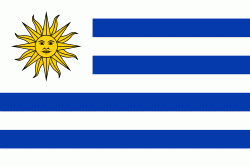 |
 |
| Flag of Uruguay | |
The area that became Uruguay was first inhabited by groups of hunter–gatherers 13,000 years ago. The predominant tribe at the moment of the arrival of Europeans was the Charrúa people, when the Portuguese first established Colónia do Sacramento in 1680; Uruguay was colonized by Europeans late relative to neighboring countries. The Spanish founded Montevideo as a military stronghold in the early 18th century because of the competing claims over the region. Uruguay won its independence between 1811 and 1828, following a four-way struggle between Portugal and Spain, and later Argentina and Brazil. It remained subject to foreign influence and intervention throughout the 19th century, with the military playing a recurring role in domestic politics. A series of economic crises and the political repression against left-wing guerrilla activity in the late 1960s and early 1970s put an end to a democratic period that had begun in the early 20th century, culminating in the 1973 coup d'état, which established a civic-military dictatorship. The military government persecuted leftists, socialists, and political opponents, resulting in deaths and numerous instances of torture by the military; the military relinquished power to a civilian government in 1985. Uruguay is today a democratic constitutional republic, with a president who serves as both head of state and head of government.
Currency / Language
| ISO | Currency | Symbol | Significant figures |
|---|---|---|---|
| UYU | Uruguayan peso | $ | 2 |
| ISO | Language |
|---|---|
| ES | Spanish language |






